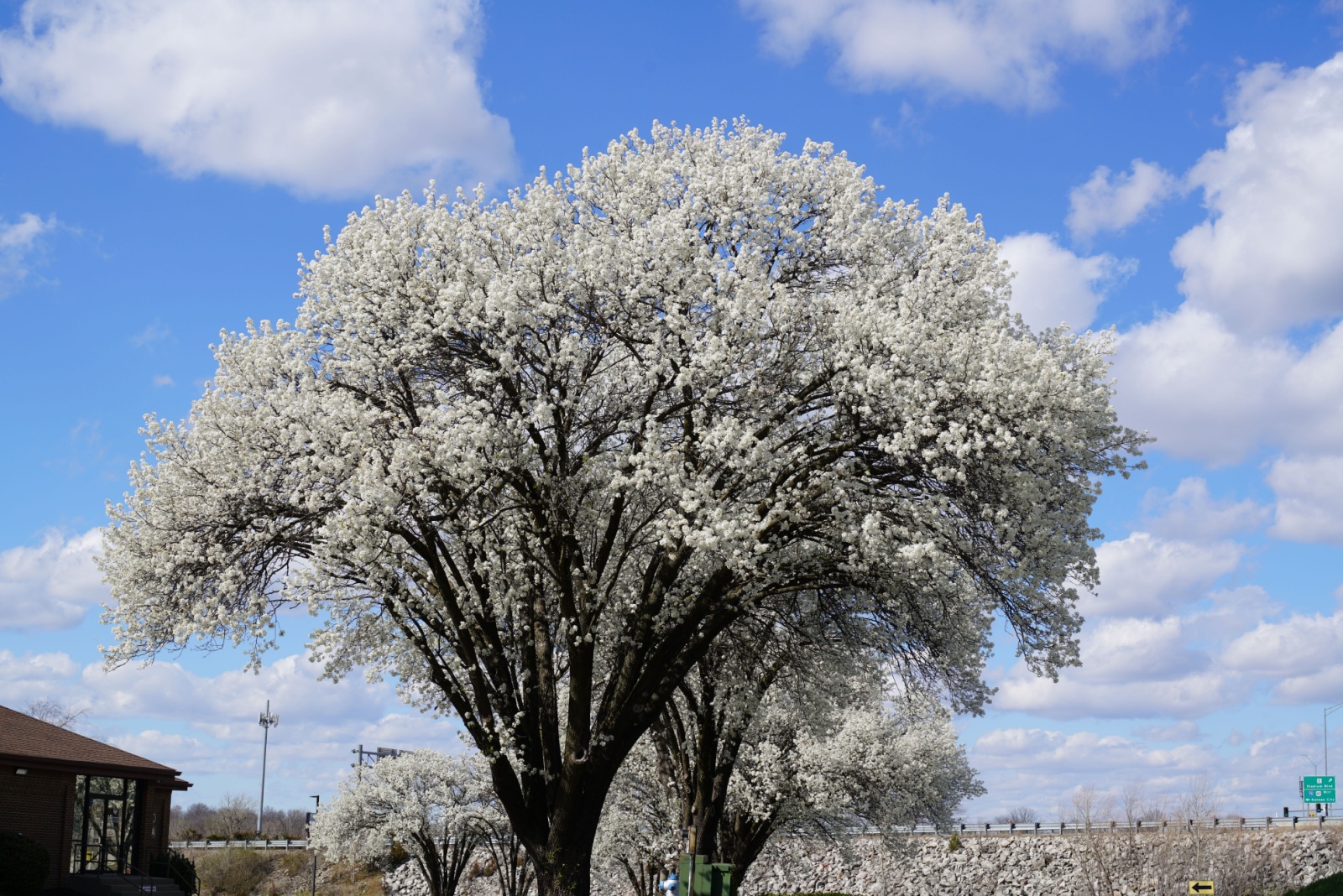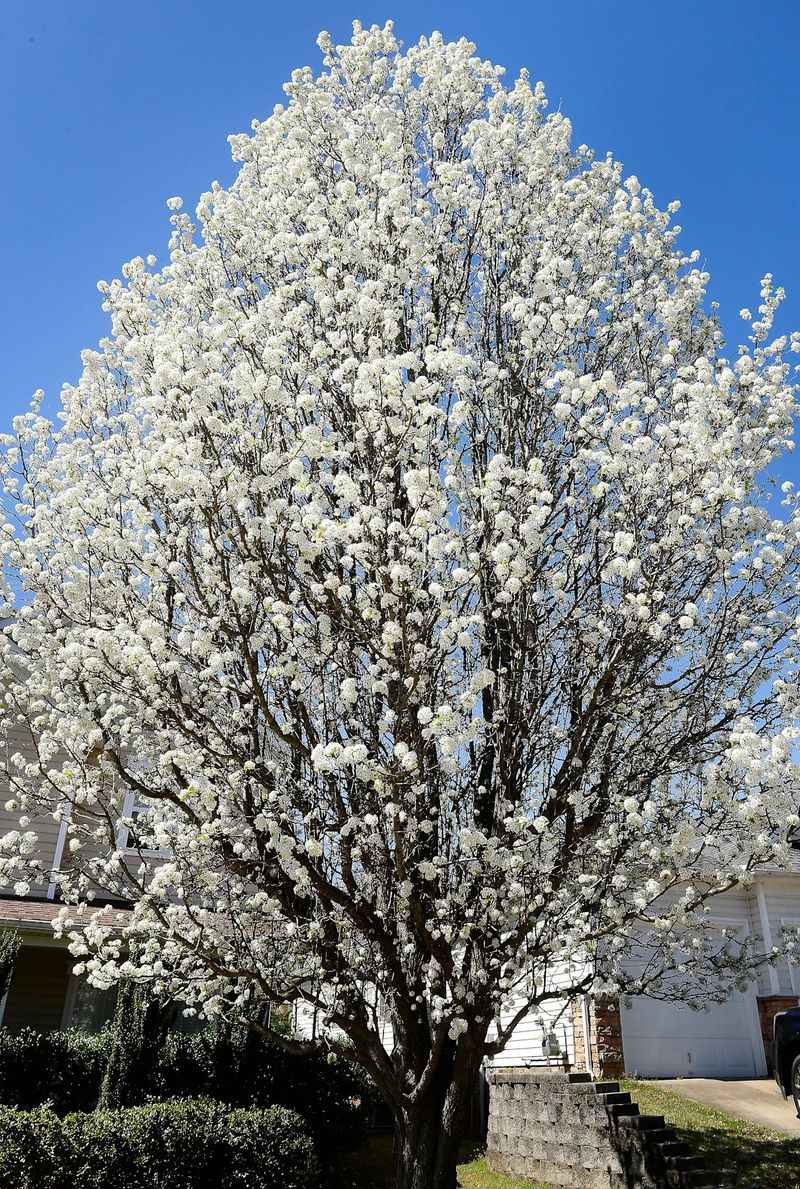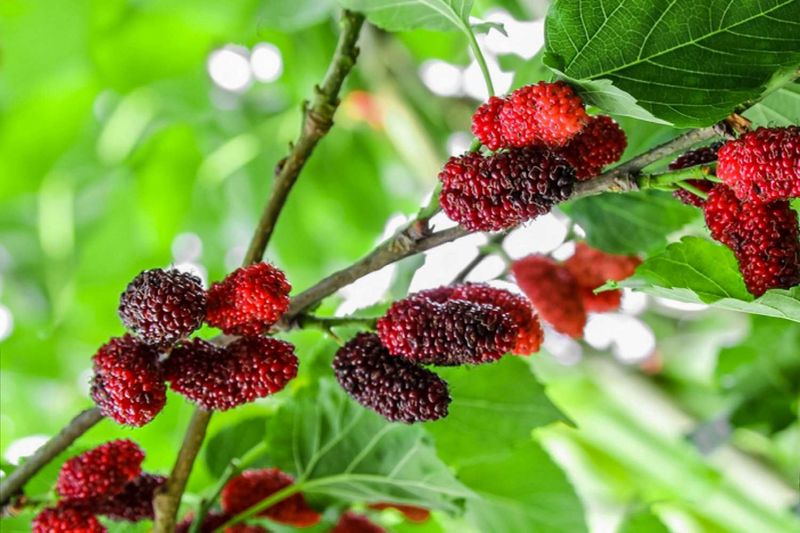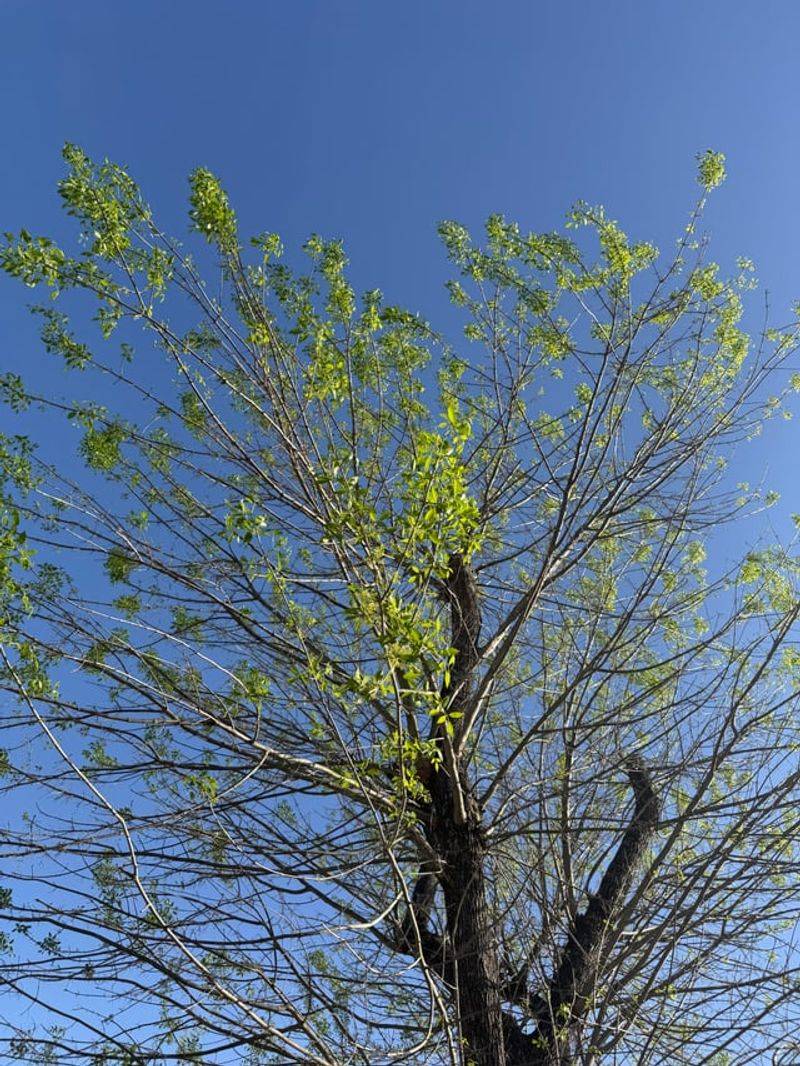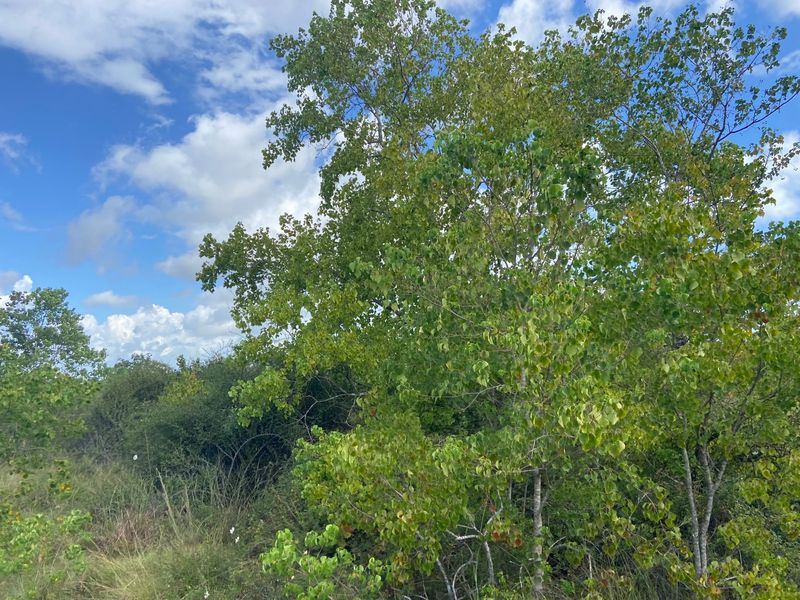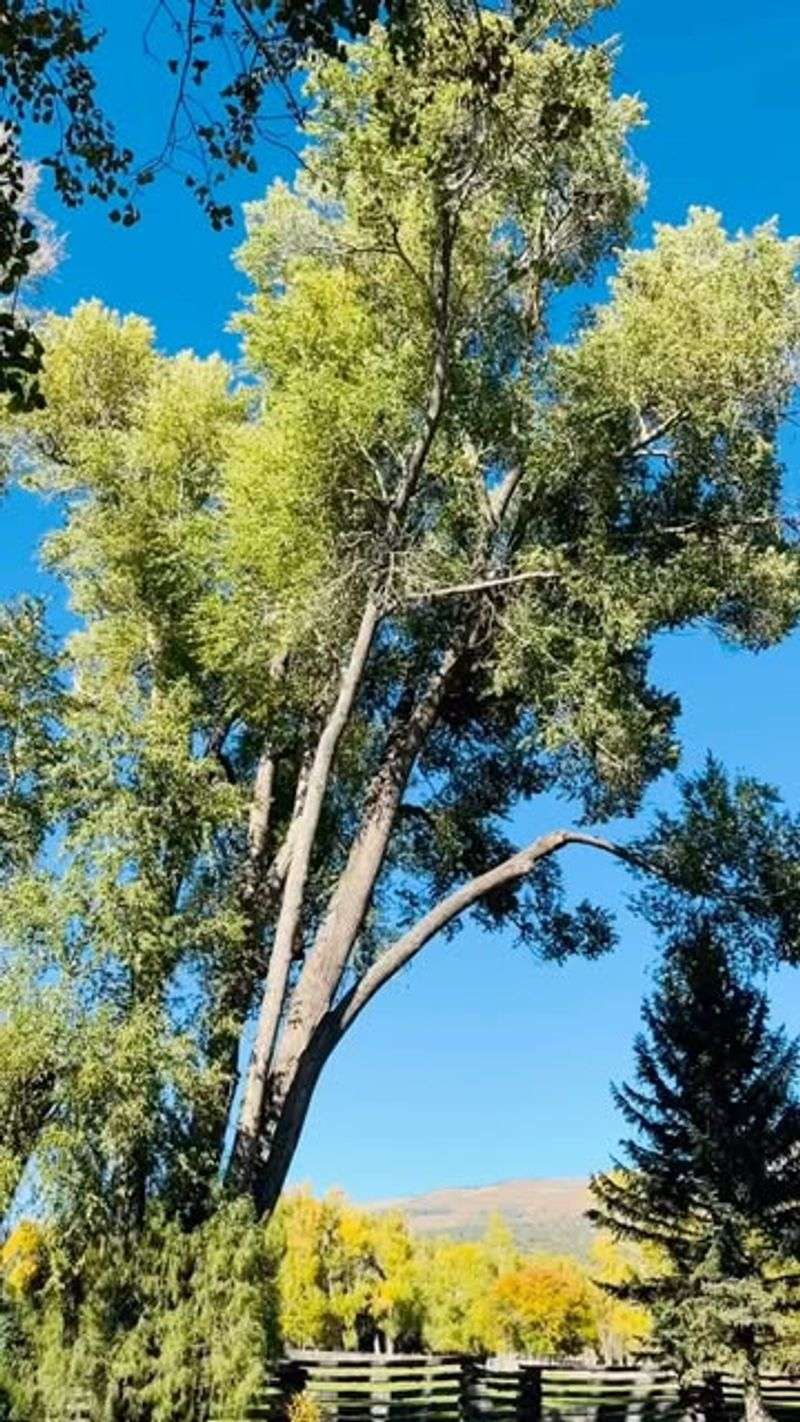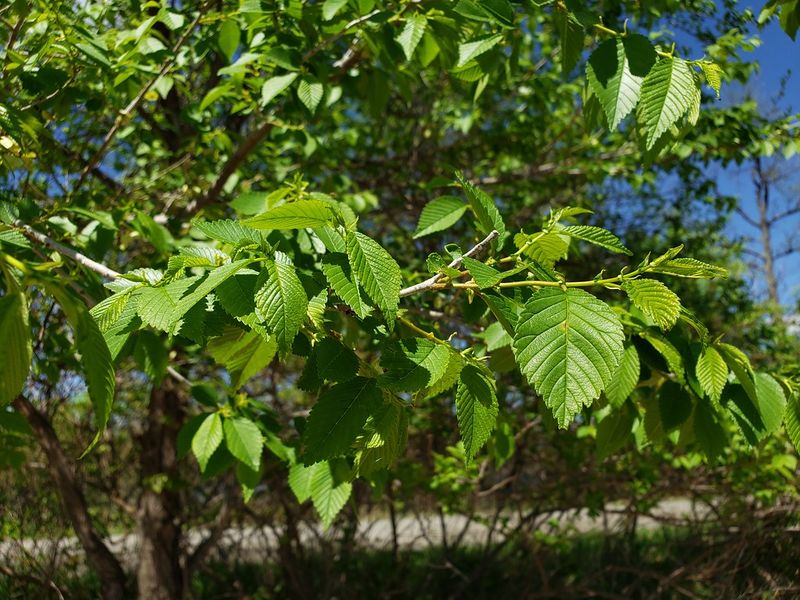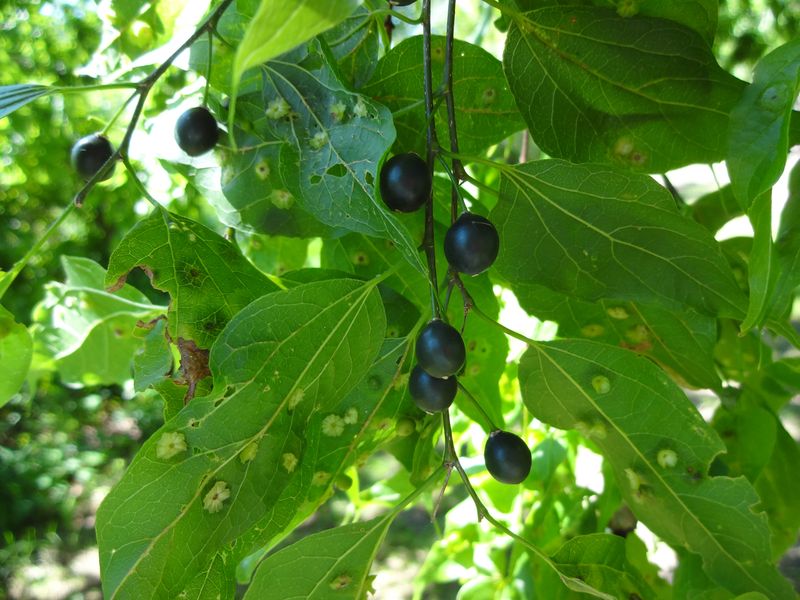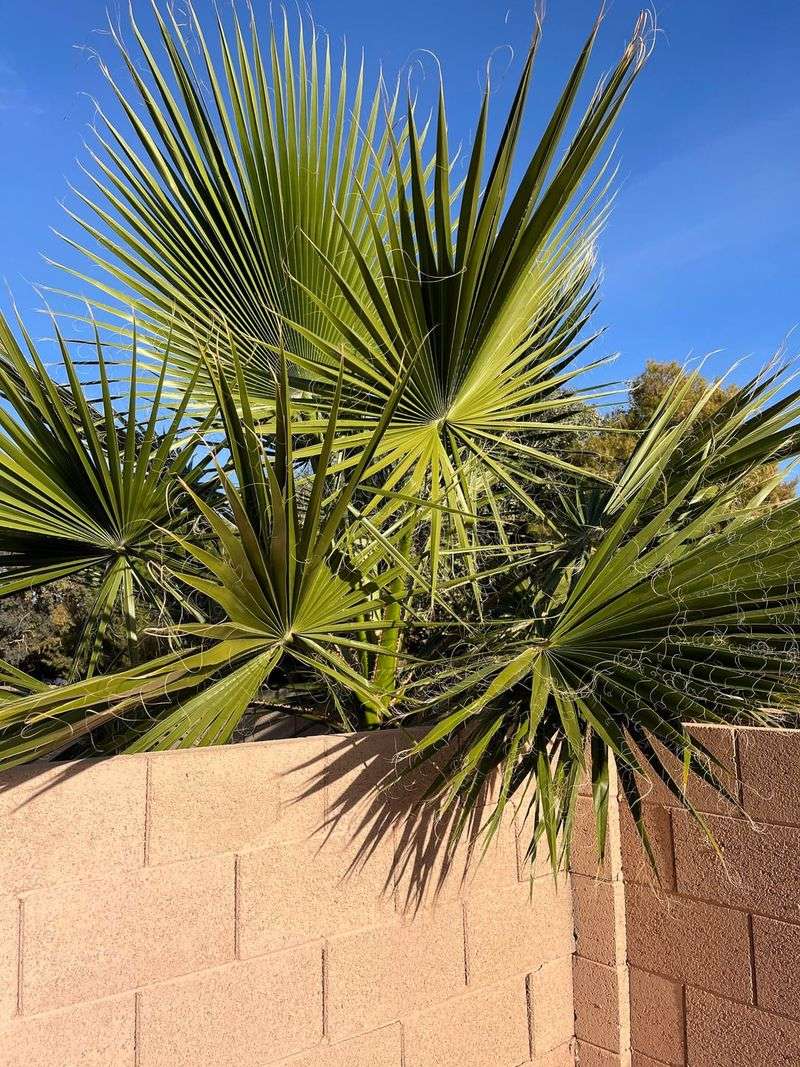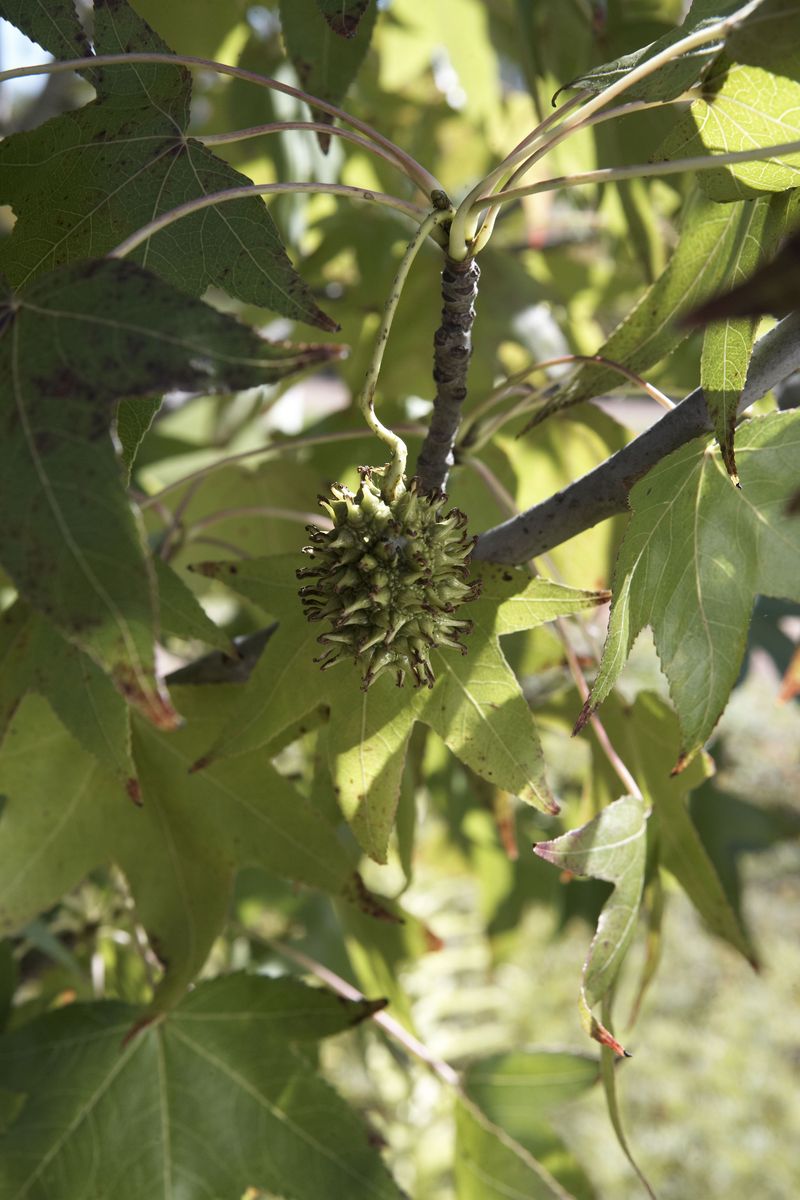Texas yards can be beautiful, but not all trees belong in them. Some species bring headaches for homeowners through aggressive root systems, weak branches, or messy habits that create constant cleanup.
Others might struggle with our harsh Texas climate, becoming diseased or attracting unwanted pests. Knowing which trees to avoid can save you thousands in property damage and countless hours of maintenance.
1. Bradford Pear
Despite their beautiful spring flowers, these trees have notoriously weak branch structures that can’t withstand Texas thunderstorms. I’ve seen entire neighborhoods littered with Bradford Pear limbs after a strong wind.
The shallow root systems often damage sidewalks and driveways, creating expensive repair bills for homeowners. Plus, their cross-pollination with other pear varieties has made them invasive throughout the state.
When planted near gardens, Bradford Pears steal nutrients from nearby plants. Their dense canopy creates too much shade for many Texas-friendly flowers and shrubs to thrive underneath.
2. Mulberry Trees
Having dealt with mulberry trees in my previous Texas home, I can attest to their incredible messiness. The purple berries stain everything they touch – patios, cars, and even your shoes as you walk across the lawn.
Their aggressive root systems are notorious for invading sewer lines and foundations. In our dry Texas soil, these roots will seek moisture wherever they can find it, often leading right to your plumbing.
Male mulberry trees produce excessive pollen that triggers allergies across the state each spring. For those with respiratory sensitivities, living near these trees can mean weeks of misery during Texas pollen season.
3. Arizona Ash
Many Texas neighborhoods were filled with these fast-growing shade trees in the 1980s, but homeowners quickly learned their lesson. Arizona Ash trees rarely live beyond 30 years in our climate, becoming hazardous as they decline.
The wood quality is poor and brittle, making them especially vulnerable during our ice storms. My neighbor’s Arizona Ash split down the middle during last winter’s freeze, narrowly missing their garage.
These trees are magnets for borers, scale insects, and various diseases that thrive in Texas. Once infested, they require constant treatment or removal, costing far more than their initial purchase price ever saved.
4. Chinese Tallow
Known for their brilliant fall colors, these trees might seem appealing at first glance. However, Chinese Tallows are among the most invasive species in Texas, crowding out native plants throughout our wetlands and forests.
Birds spread their seeds far and wide, creating new seedlings that pop up everywhere in your yard. For me, pulling Chinese Tallow saplings became a never-ending battle in my East Texas garden beds.
The sap contains toxins that can irritate skin and harm pets. When fall comes, those colorful leaves drop all at once, creating a thick mat that smothers lawn areas and requires immediate cleanup.
5. Cottonwood Trees
The floating cotton-like seeds that give these trees their name become a nuisance throughout Texas neighborhoods each spring. They clog air conditioner units, pool filters, and seem to find their way into every corner of your home.
Cottonwoods grow incredibly fast but pay for that speed with weak wood. After last year’s Texas thunderstorms, I helped three neighbors clear fallen cottonwood branches from their properties.
Their thirsty root systems can extend three times the height of the tree, seeking water sources and often disrupting underground pipes. In our drought-prone state, these water-hungry giants can strain both your plumbing and water bill.
6. Siberian Elm
Fast growth might seem appealing, but Siberian Elms create more problems than they solve in Texas landscapes. Their brittle branches snap easily in our spring storms, sometimes causing significant property damage.
The seeds produce thousands of offspring that sprout in flower beds, gutters, and even in foundation cracks. Walking around my property last spring, I counted over 40 elm seedlings in just one small garden area.
These trees are highly susceptible to various diseases and pests common in Texas, including elm leaf beetles that can defoliate them by midsummer. The resulting maintenance and cleanup make them a poor choice for homeowners seeking low-maintenance yards.
7. Hackberry Trees
While native to Texas, hackberries attract an astonishing number of insects, including the hackberry nipple gall maker that creates bumpy leaves and the woolly hackberry aphid that drips sticky honeydew onto everything below.
Their berries attract birds, which sounds nice until you discover the purple stains on your driveway, patio furniture, and vehicles. The mess beneath a mature hackberry can require daily cleanup during certain seasons.
Hackberries have relatively short lifespans compared to other shade trees and often develop hollow trunks as they age. During one particularly fierce Texas thunderstorm, I watched a neighbor’s 30-year-old hackberry split completely in half.
8. Mexican Fan Palm
These dramatic palms might evoke tropical vibes, but they’re poorly suited to most Texas yards. During our occasional freezes, they often sustain severe damage, creating an eyesore that takes years to recover – if they survive at all.
The maintenance required is substantial, as dead fronds don’t drop naturally but hang in what landscapers call a “skirt” around the trunk. Removing these requires specialized equipment or professional climbers at considerable expense.
Sharp thorns along the leaf stems can cause painful injuries during yard work. After getting several cuts while raking beneath my aunt’s fan palm in Houston, I understand why many Texas gardeners avoid these trees entirely.
9. Sweet Gum Trees
Anyone who’s stepped barefoot on a sweet gum ball knows why these trees make the list. These spiky seed pods cover the ground by the thousands, making lawn maintenance difficult and barefoot walking downright dangerous.
Their aggressive surface roots often break through sidewalks and patios. My cousin’s Sweet Gum tree in Dallas created a roller coaster effect on his once-smooth driveway, eventually requiring complete replacement.
While beautiful in fall, sweet gums drop their leaves gradually over a long period, requiring repeated raking throughout the season. For Texas homeowners seeking less yard work and more enjoyment, these trees represent the opposite of low maintenance.

